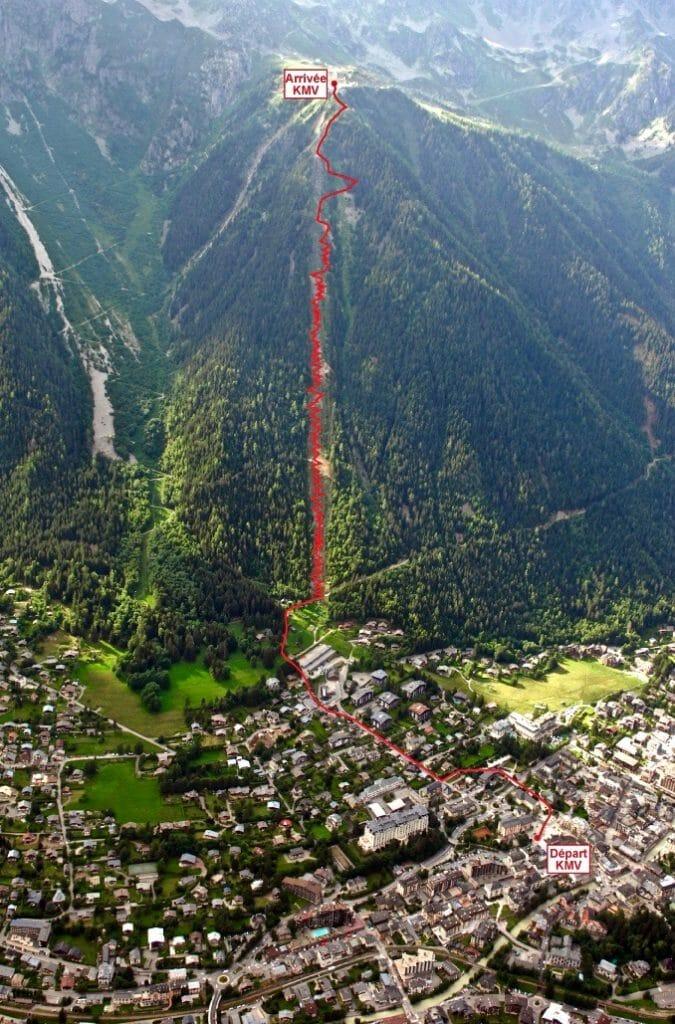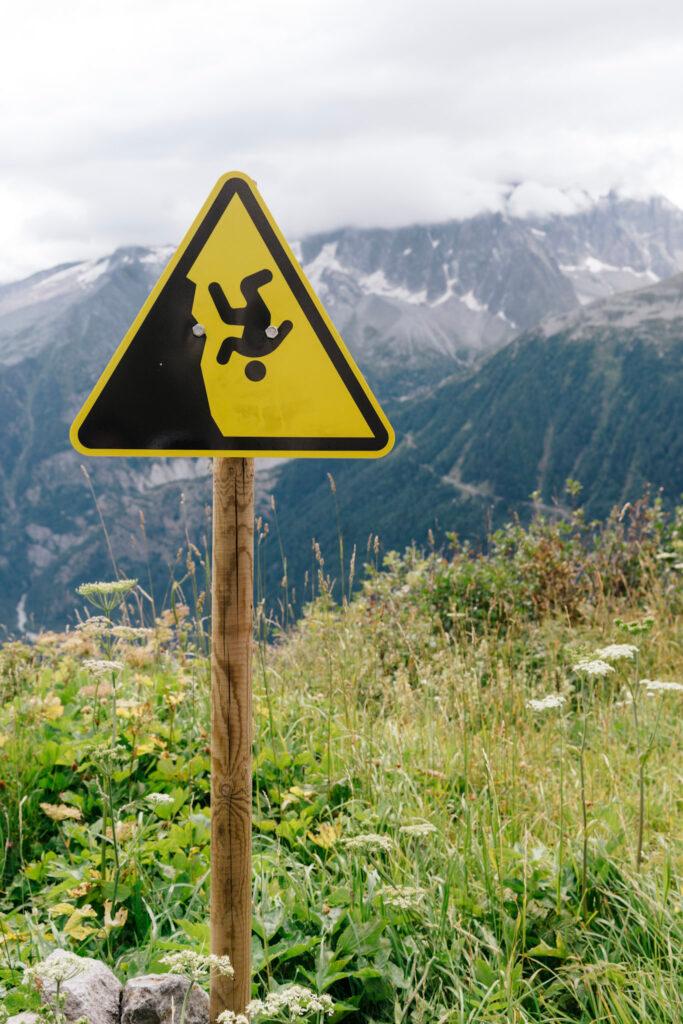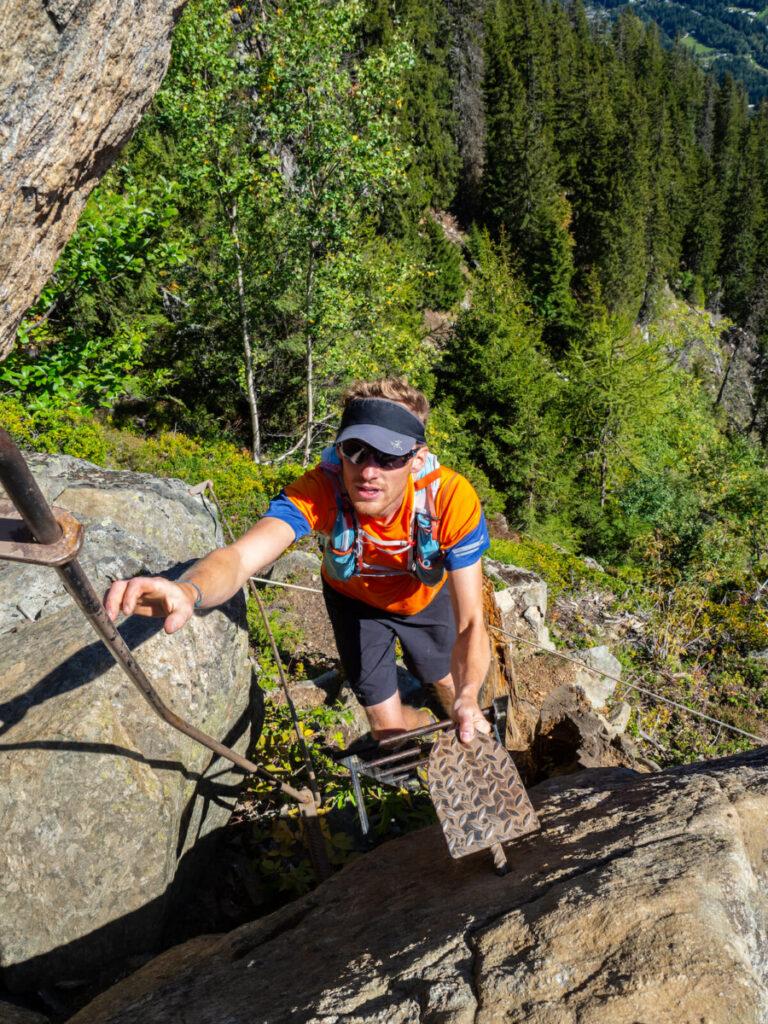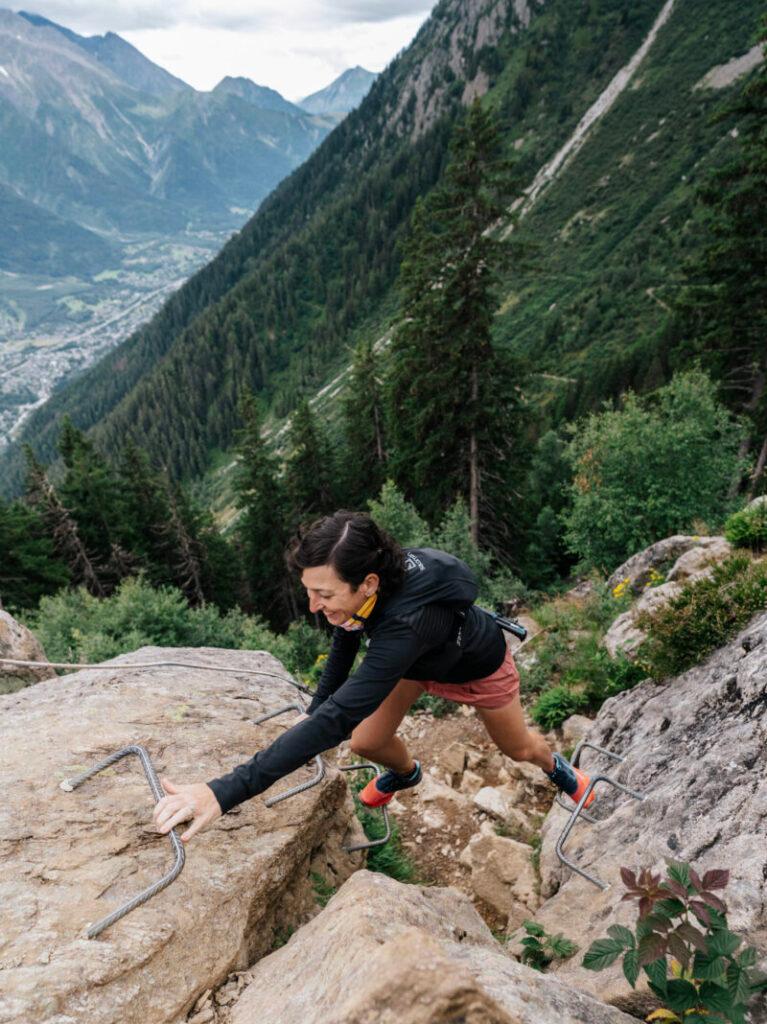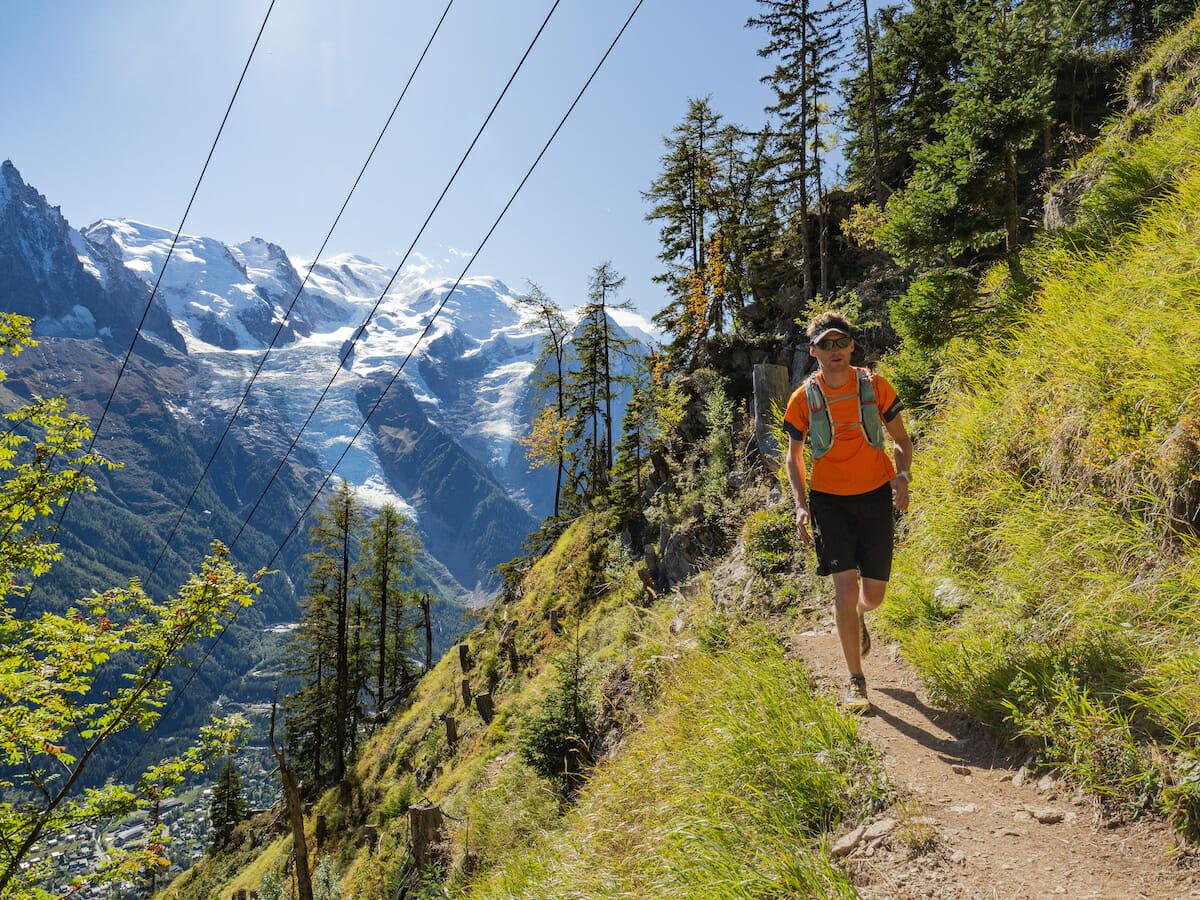
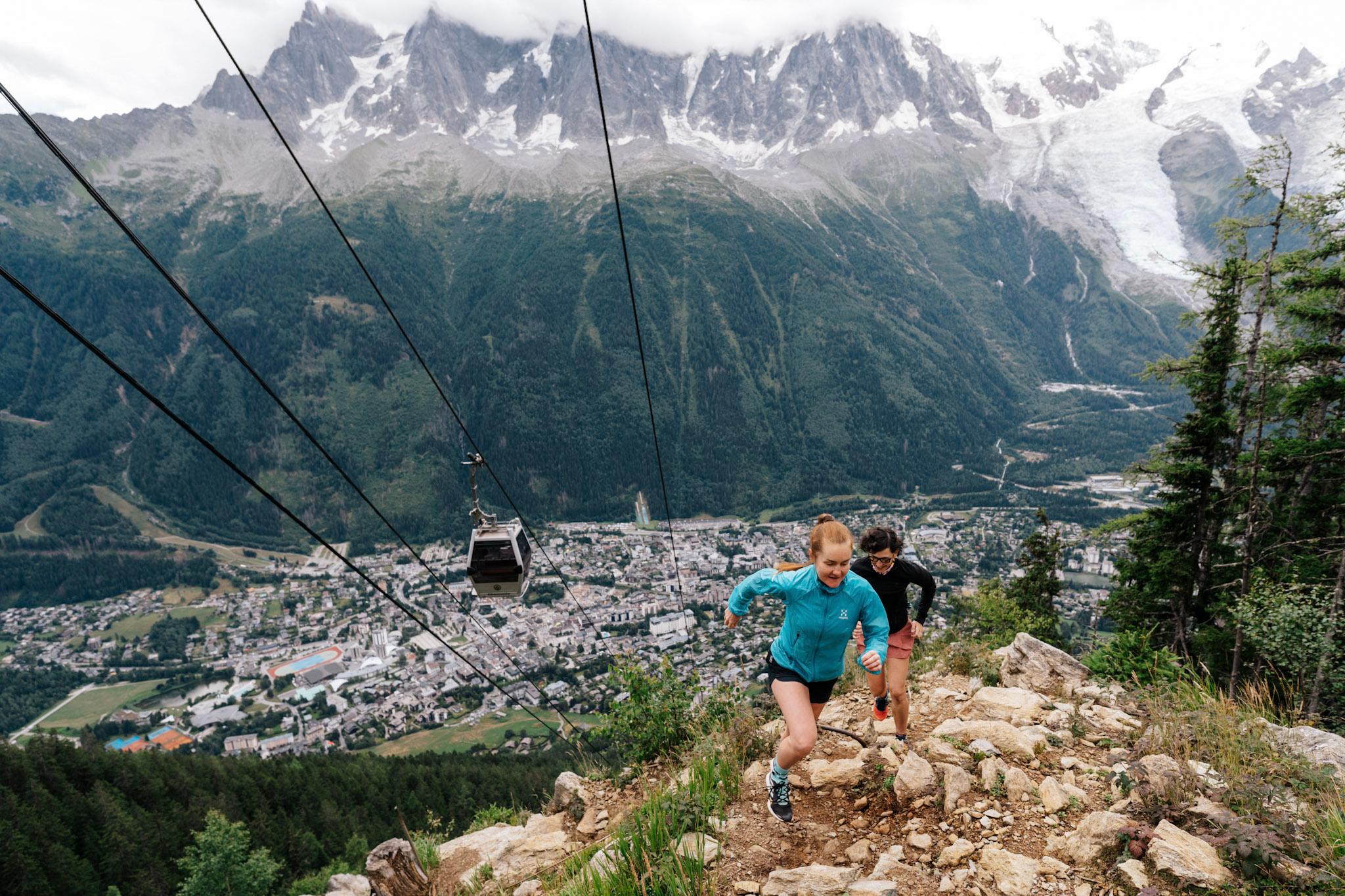
Tips for Running Chamonix’s Vertical Kilometer
We’ve pulled together our tips for safely running Chamonix’s Vertical Kilometer, taking advice from Manu Ranchin, the head coach at Chamonix’s CMBM trail running club, and his remarks on a tragic accident on the “KV.”
You can also learn more about the unique history of Chamonix’s famous Vertical Kilometer, or “Kilomètre Vertical,” as it’s known locally. This 3.8 km route rises exactly 1,000 meters from the center of Chamonix’s old town, and is a popular experience for both locals and visiting trail runners.
Due to its steep, high mountains and great lift access, Chamonix has a host of trails which blur the line between trail running and mountaineering. The most accessible of these more challenging trails, starting conveniently in the center of town, is the “Kilomètre Vertical.” The difficulties of this trail are not always immediately apparent to trail runners undertaking the course.
We asked trail running coach Manu Ranchin from Chamonix’s trail running club CMBM to give some advice to those attempting the route. Manu said that while the path is generally safe to ascend, it’s crucial to pay attention to the loose gravel sections and steep drops. The final third is where it gets technical – with ladders, cables, and metal steps fastened into the boulders. Power-hiking turns quickly turns into full-body scrambling.
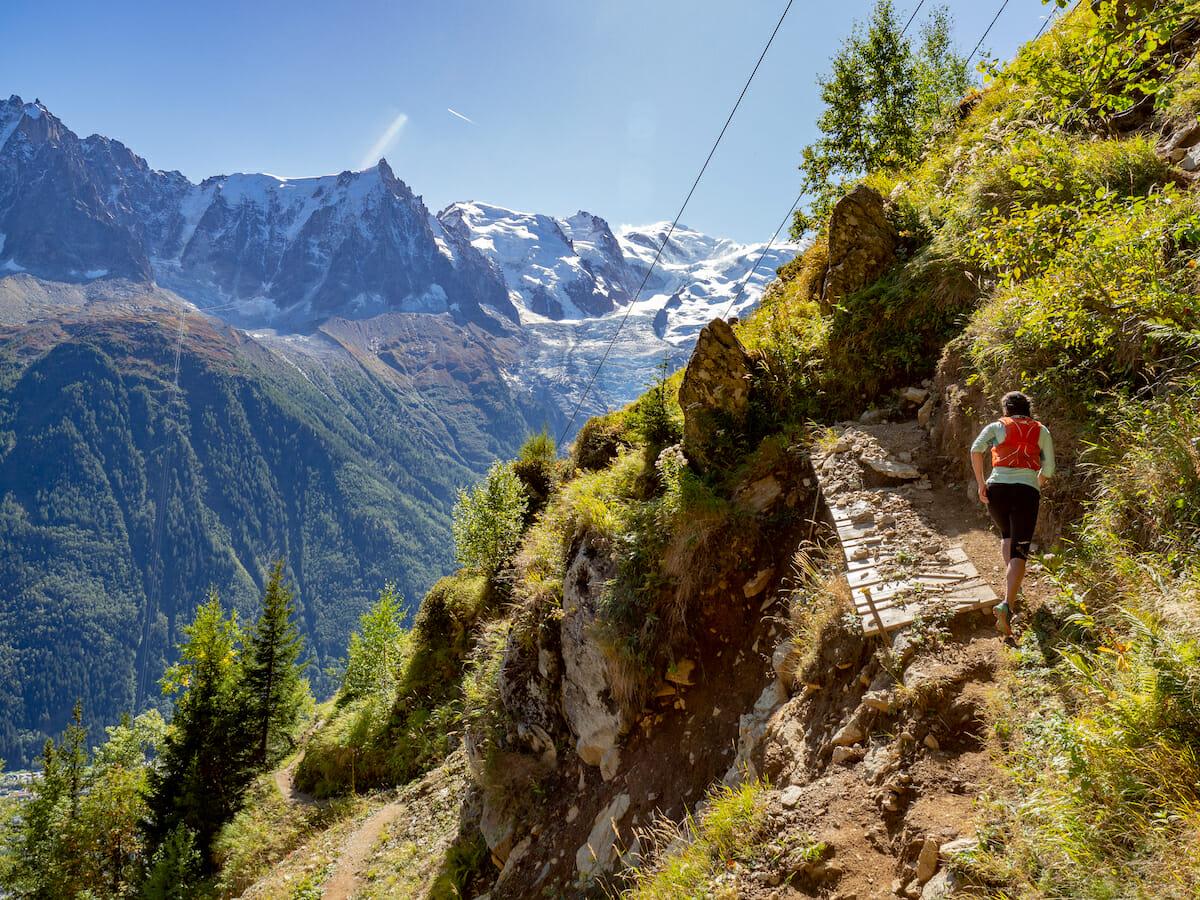
Whereas trails in the Chamonix valley are normally maintained by the “commune,” or town council, Manu explained that the Vertical Kilometer is not on that list. Therefore, the state of the trail– including ladders, cables and metal rungs– is not always certain. You can, however, get an update at the Office de la Montagne, conveniently located adjacent to the start of the KV.
Once you have finished the route, Manu strongly advises not to return via the KV. The final section’s technical nature, the narrowness of the path and the sheer drop-offs all combine to make the KV dangerous to descend. Furthermore, the chance of rockfall is greater when moving downhill at a faster speed than when one ascends. Instead, the preferable descent route starts at the Planpraz paragliding launch area, located about 200 meters uphill from the top gondola station. It’s signed “Les Lacets,” or “The Laces,” thanks to the series of lace-like switchbacks that make for a more gentle descent. It’s also possible to take the gondola down to Chamonix. During trail running season, the lift operates from mid-June to mid-September.
Testament to the potential danger of the KV, just two days before the annual race up the route, in June 2018, a hiker attempting to descend the route fell to his death when he lost his footing and hit a tree.
The British newspaper, The Mirror, reported, “The man was attempting the descent of the Vertical KM. The tragic accident occurred at pylon number 11, on the upper part of the trail. He slipped at the exit of one of the steepest sections of the course, which is equipped with metal ladders and handrails.”
A trail runner on the KV at the same time was the last person to see the victim. Preferring to remain anonymous, she stated, “I was fitted out in my lightweight trail running gear, trail shoes, and had both hands free. When he passed, I noticed that he, strangely, had an ice axe in one hand and was wearing large heavy hiking boots. He may have also had a large backpack. The most disconcerting element was that he was facing forward, descending this very difficult section with his back to the steep slope.”
The witness heard about the subsequent accident upon arriving at the top of the Planpraz lift several minutes later. “I was shaken. I knew immediately that it was the man whom I had passed because there were very few people on the VK at that time. As I descended by the “Lacets,” I heard and then saw the rescue helicopter above the VK. I didn’t know he had died until I read it in the newspaper the next day.”
This fatality makes clear that it’s important to be prepared to tackle a route even as short as the KV – and that means well-informed, physically ready, and properly equipped. Don’t do this route if you suffer from vertigo, and check the weather forecast before you go – the KV is exposed, and not a good place to be caught out in a storm. Make sure you have a phone in case of an emergency, and for your first go at the KV it’s a good idea to bring someone else along, too. Your trail running vest should include a few snacks, some water, a jacket and some money for the gondola ride down.
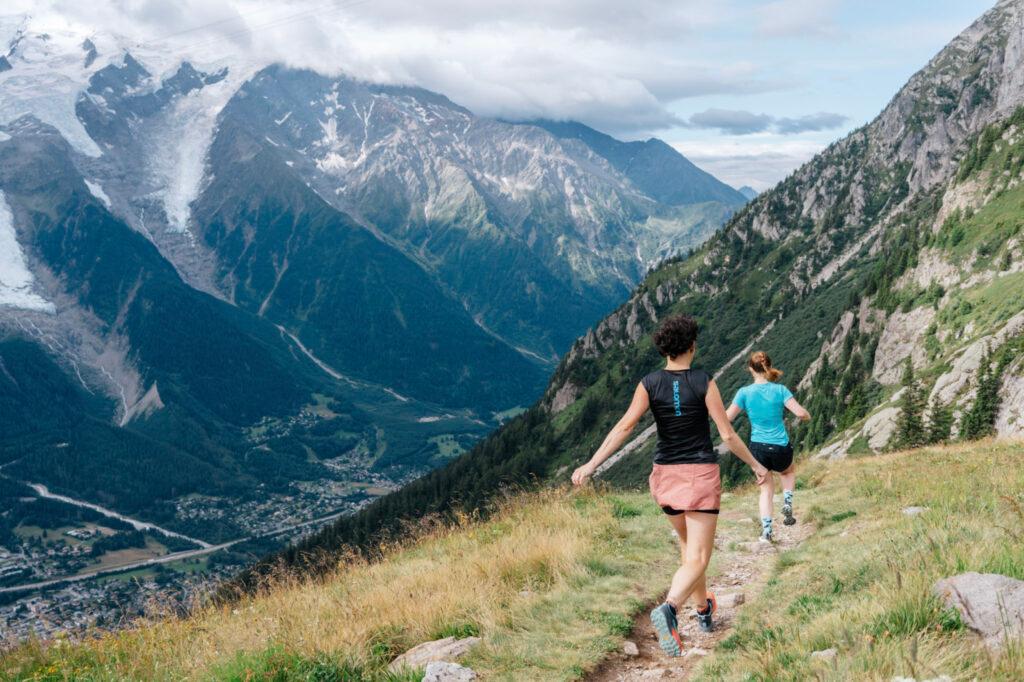
Fortunately, there are two possible “escape routes” if you want to turn off the KV before the top. On reaching 1250m elevation, you can go left or right onto the Petit Balcon Sud where it intersects the KV. Or, opt out higher up where another path crosses the KV at 1500m. In both cases, you can just turn either way onto the traversing path and then take the next downhill to get safely back to town. This means you’ll miss the final, exciting 300m of vertical challenge, where technical sections come in rapid-fire sequence. But, for those who want to avoid that airy feeling, these bail-outs provide welcome options.
After your first go at the KV you will have had a taste of what’s possible in the Chamonix Valley. You might want to go on to try some of the more notorious routes around the valley heading up towards the glaciers or along ridge lines. For many of us though, the KV will be ample challenge!
